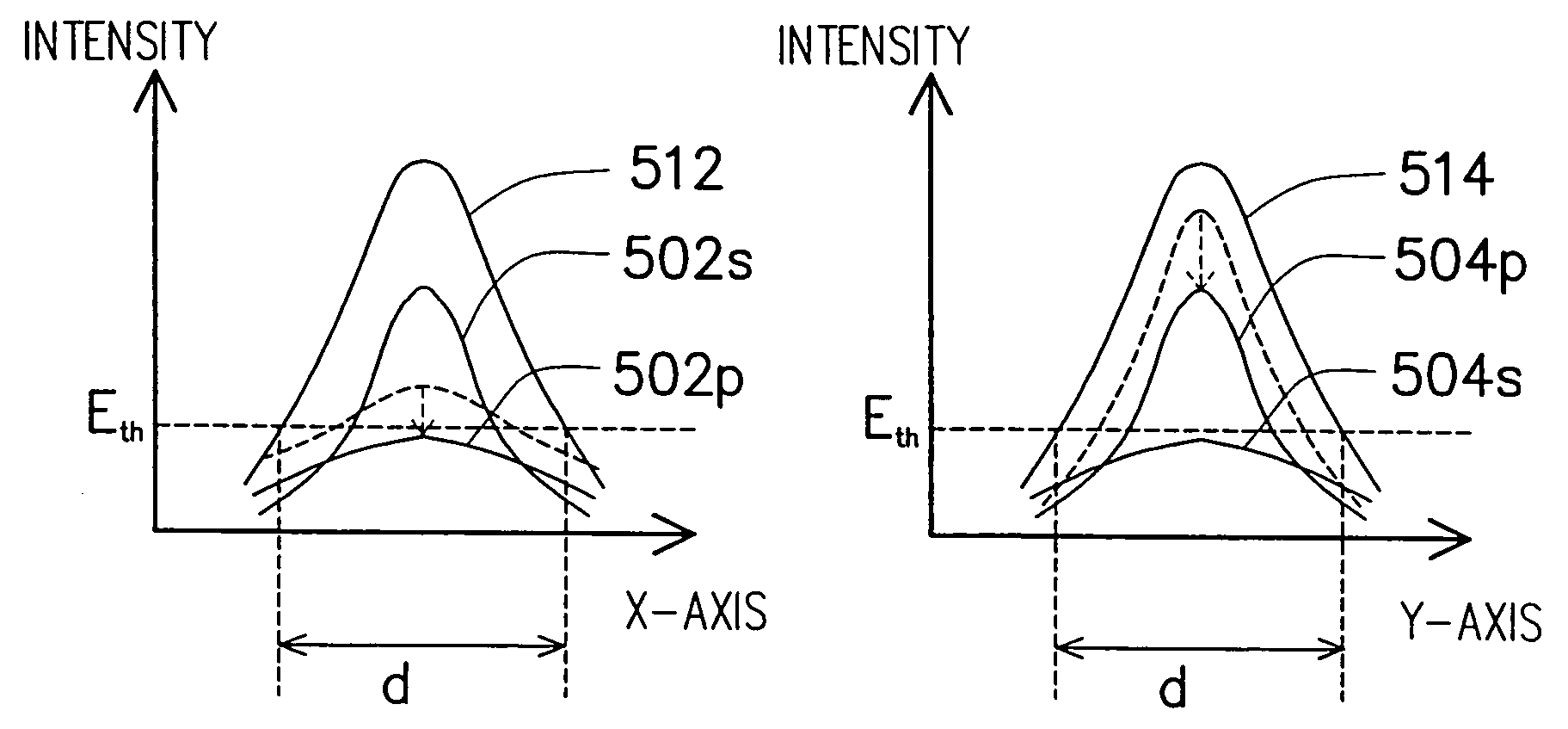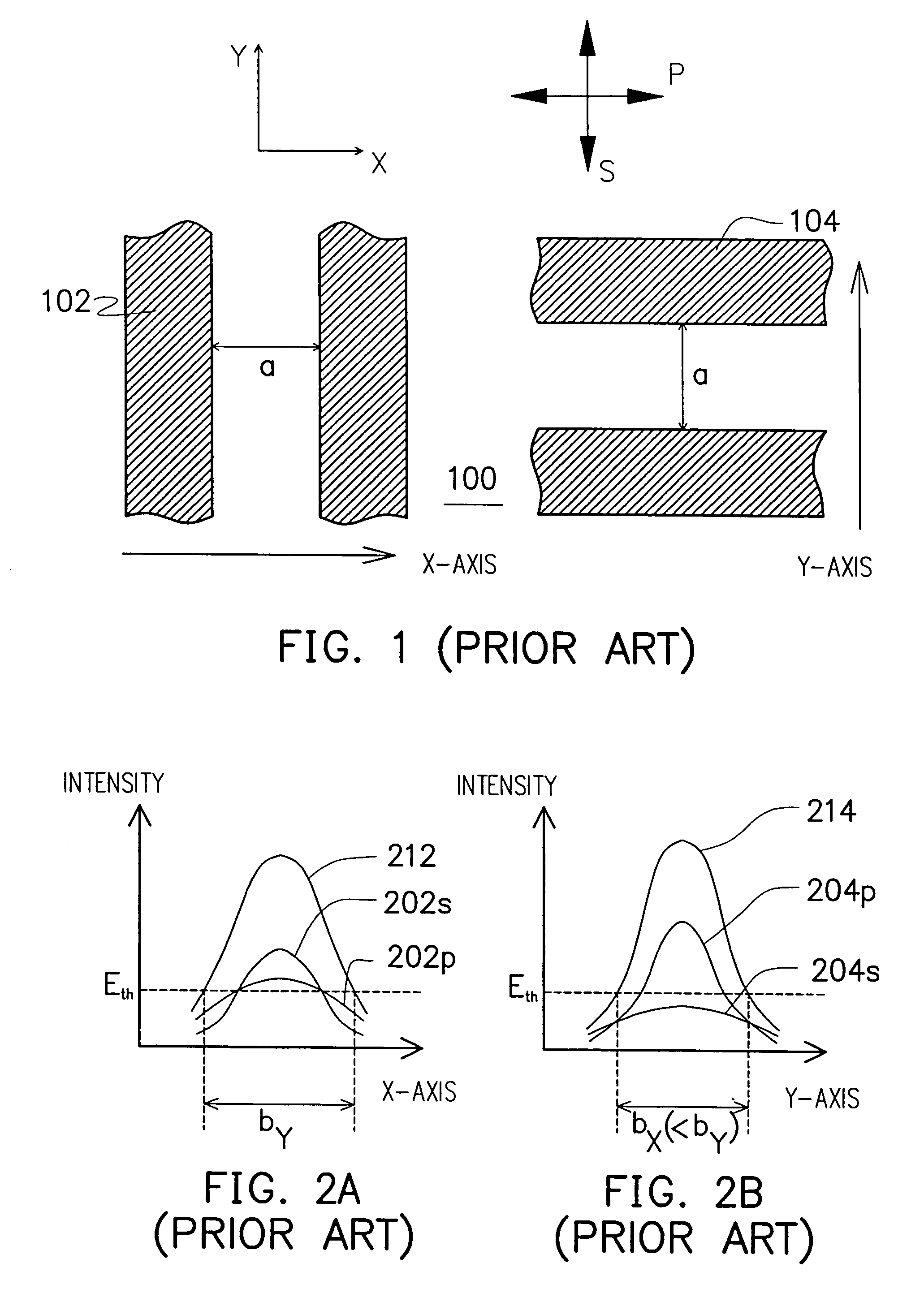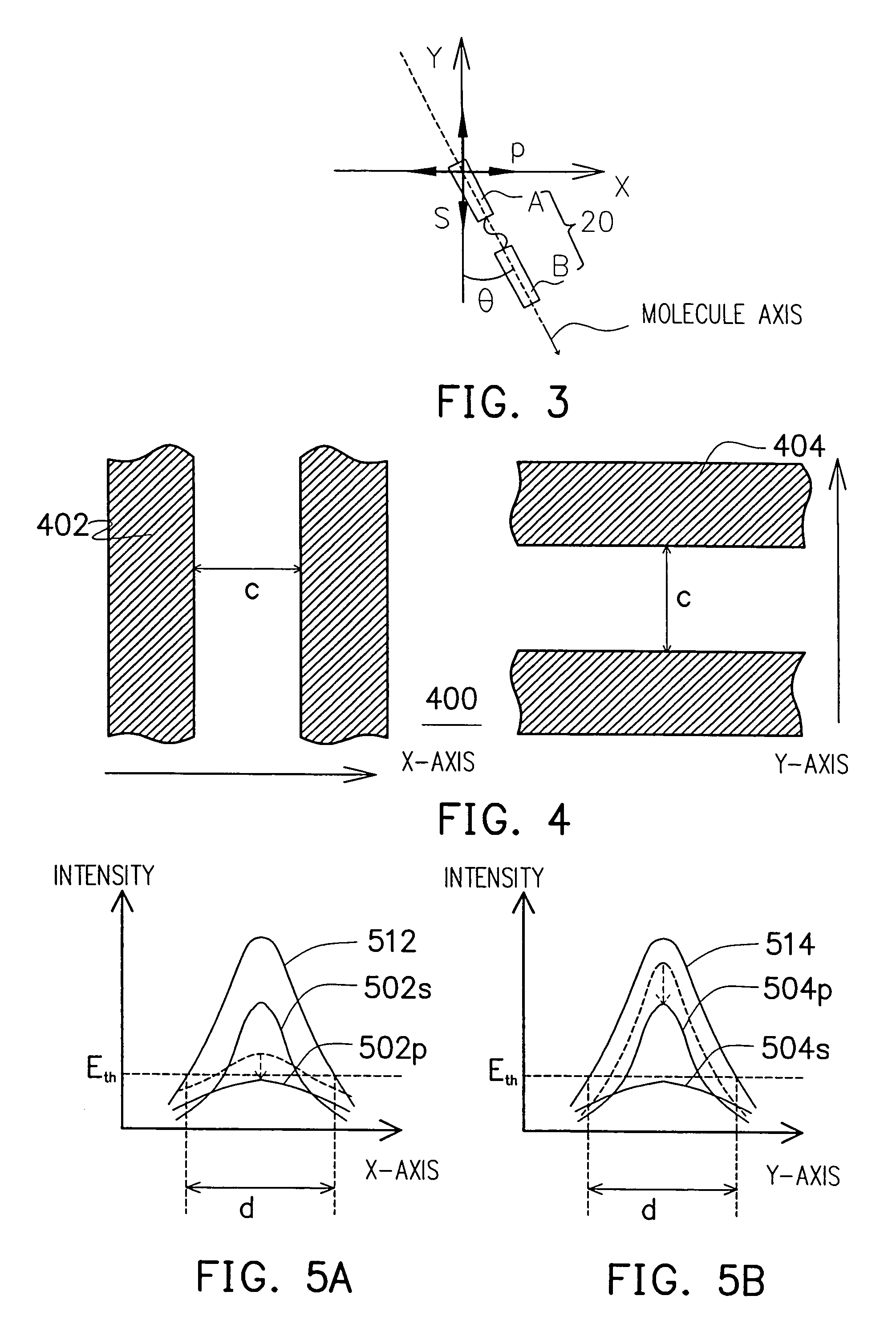Photoresist with adjustable polarized light reaction and photolithography process using the photoresist
a photoresist and polarized light technology, applied in the field of materials, can solve the problems of pattern orientation, inability to compensate the difference in intensity profile caused by the difference of transmission coefficient of p-/s-polarized light, and the resolution of photolithography process becomes increasingly demanding, so as to prevent pattern deformation and compensate the difference in transmission coefficient.
- Summary
- Abstract
- Description
- Claims
- Application Information
AI Technical Summary
Benefits of technology
Problems solved by technology
Method used
Image
Examples
Embodiment Construction
[0022]FIG. 3 shows the orientation of the photosensitive polymer and polarization direction of the P- / S-polarized light. In this embodiment, a photosensitive polymer includes a linear photosensitive polymer 20 that may comprise an electric dipole or a magnetic dipole and may be oriented by applying an electric field or a magnetic field. The photosensitive polymer 20 further comprises a photosensitive section A and an anti-etching section B. The photosensitive section A absorbs the exposure light source to generate an optical reaction, and the anti-etching section B improves the force to resist the plasma etching. The photosensitive section A includes PMDA with a molecule weight 102˜108, and the anti-etching section B includes ODA with a molecule weight 102˜108, for example.
[0023]Referring to FIGS. 3, when the molecule axis (the dashed line) of the liner photosensitive polymer and the P(S)-polarized light overlap, the highest response of the P(S)-polarized light is obtained, while th...
PUM
| Property | Measurement | Unit |
|---|---|---|
| photosensitive | aaaaa | aaaaa |
| transmission coefficient | aaaaa | aaaaa |
| transmission coefficients | aaaaa | aaaaa |
Abstract
Description
Claims
Application Information
 Login to View More
Login to View More - R&D
- Intellectual Property
- Life Sciences
- Materials
- Tech Scout
- Unparalleled Data Quality
- Higher Quality Content
- 60% Fewer Hallucinations
Browse by: Latest US Patents, China's latest patents, Technical Efficacy Thesaurus, Application Domain, Technology Topic, Popular Technical Reports.
© 2025 PatSnap. All rights reserved.Legal|Privacy policy|Modern Slavery Act Transparency Statement|Sitemap|About US| Contact US: help@patsnap.com



